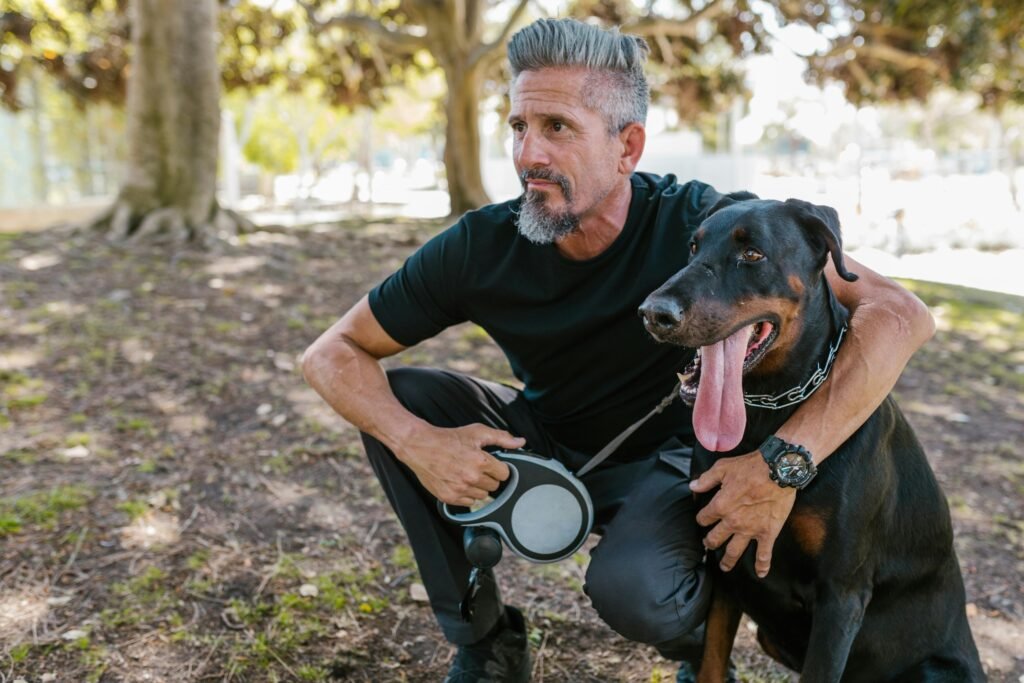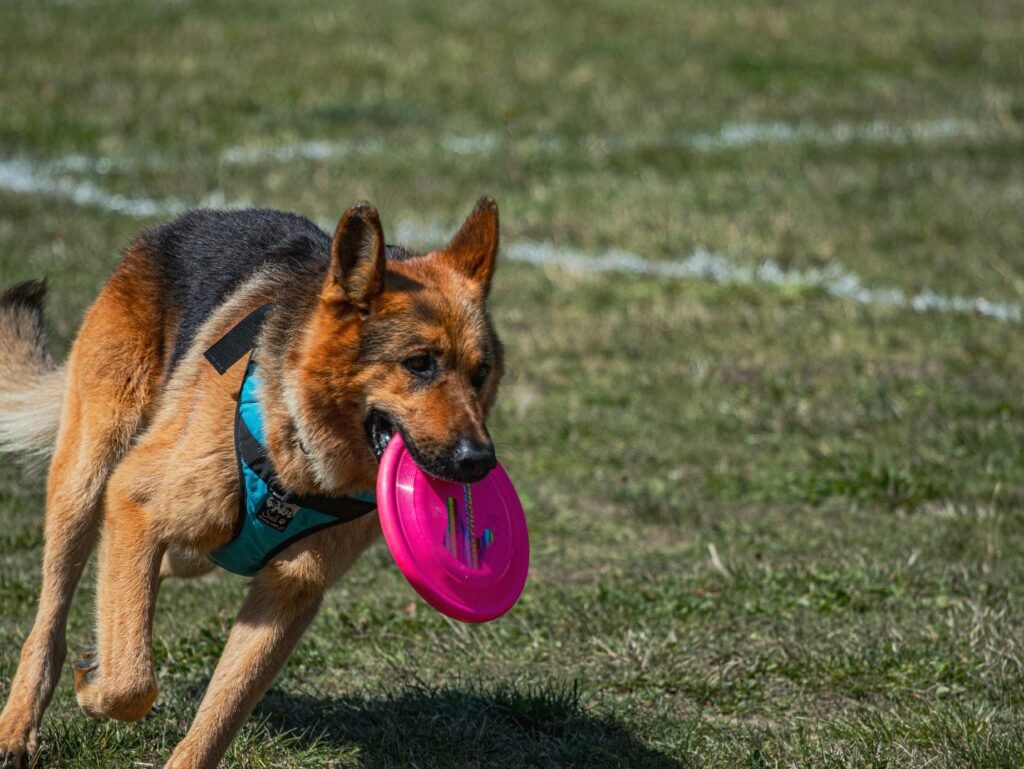Welcome back to creating a beautiful and functional home! As any pet owner knows, our furry friends bring immense joy and warmth into our lives. They become cherished members of the family, adding to the coziness and happiness of our living spaces. However, living harmoniously with a dog also requires a little effort, and one of the most rewarding investments you can make is in dog training.
Effective dog training is more than just teaching a few tricks; it’s about clear communication, building a strong bond, and ensuring your dog is a well-behaved member of your household and the community. A trained dog is a happier dog, and a well-behaved dog makes for a more peaceful and enjoyable home environment – fewer chewed slippers, less frantic barking, and calmer interactions with guests.
If you’re a new dog owner, looking to brush up on skills with your current companion, or wanting to address specific behaviors, this guide to dog training fundamentals and practical tips is for you. Let’s learn how to help your dog thrive in your home!
Why Dog Training is Essential for a Harmonious Home
For homeowners and families, integrating a dog smoothly into daily life is key to maintaining that beautiful, functional, and welcoming space you’ve worked hard to create. Dog training directly contributes to this harmony in numerous ways:
- Protecting Your Property: Proper training significantly reduces destructive behaviors like chewing furniture, digging up the garden, or having accidents indoors (hello, house training!). This saves you money and keeps your home looking its best.
- Creating Peace and Quiet: Excessive barking can disrupt your household and annoy neighbors. Training helps manage barking, ensuring a more serene atmosphere.
- Ensuring Safety: A dog that reliably comes when called (recall training) is safer in the yard or if they accidentally get loose. Teaching commands like “sit” or “stay” prevents them from rushing out the door or jumping on visitors, ensuring everyone’s safety and comfort.
- Easier Routines: A trained dog fits seamlessly into your daily schedule – going for walks calmly (leash training), waiting patiently during meals, or settling down when asked.
- Reducing Stress: Behavior issues are a primary reason dogs end up in shelters. Effective dog training prevents many common problems, reducing stress for both you and your dog and strengthening your bond.
- Better Socialization: Training helps your dog learn how to behave around people and other animals, making visits from friends and family (and their pets) much more pleasant.
Ultimately, dog training is an investment in a happier, less stressful, and more integrated life with your canine companion within the comfort of your home.

Getting Started: The Fundamentals of Dog Training
Ready to begin? Dog training is built on a few core principles that make the process effective and enjoyable for both you and your dog.
Understanding Your Dog
Before you start teaching commands, take some time to understand canine behavior.
- Breed Traits: Different breeds were developed for different purposes, influencing their energy levels, instincts (like herding or retrieving), and how they learn. Research your dog’s breed (or mix) to understand their natural tendencies.
- Canine Communication: Learn to read your dog’s body language – tail wags, ear position, posture, facial expressions. Understanding when they are happy, stressed, fearful, or excited helps you respond appropriately.
- Energy Levels: A high-energy dog needs more exercise and mental stimulation than a low-energy one. Meeting their energy needs is crucial for managing behavior issues before they start. A tired dog is often a well-behaved dog!
Positive Reinforcement: The Golden Rule
The most effective and humane method of dog training is positive reinforcement. This means rewarding behaviors you want your dog to repeat.
- Rewards: Find what motivates your dog! This could be small, tasty treats (often the most powerful initial motivator), praise (“Good dog!”), petting, or playing with a favorite toy.
- Timing is Key: Give the reward immediately (within 1-2 seconds) after your dog performs the desired behavior. This helps them connect the action with the reward.
- Keep it Positive: Avoid punishment, yelling, or physical corrections. These can damage your bond, make your dog fearful, and are less effective than showing them what you do want them to do.
Positive reinforcement builds a dog’s confidence and makes dog training a fun game they want to play.
Consistency and Patience
These are perhaps the most important ingredients for successful dog training.
- Be Consistent: Use the same command words, hand signals (if any), and expectations every time. Ensure everyone in the household who interacts with the dog uses the same methods.
- Be Patient: Every dog learns at their own pace. Some pick things up quickly, others take more repetition. There will be setbacks (especially during house training!). Don’t get discouraged.
Timing and Clear Communication
- Interrupt Undesired Behavior, Then Redirect: If you catch your dog doing something wrong (like chewing a shoe), calmly interrupt them with a sound (a gentle clap or “uh-oh”), then immediately redirect them to an appropriate toy or activity and praise them when they engage with that.
- Short, Frequent Sessions: Dogs (especially puppies) have short attention spans. Train in short bursts (5-10 minutes) several times a day rather than one long session. Keep it fun and end on a positive note.

Key Areas of Dog Training for Home Life
Now, let’s look at specific types of dog training that are particularly valuable for a happy home environment.
House Training (Potty Training)
Absolutely crucial for living indoors! The goal is to teach your dog that the only acceptable place to eliminate is outside.
- Establish a Schedule: Take your dog out frequently – first thing in the morning, last thing at night, after waking from naps, after eating, and after playing. Puppies need to go out every 1-2 hours initially.
- Choose a Potty Spot: Take them to the same spot every time to help them associate the area with elimination.
- Praise and Reward: When they go potty outside, praise them enthusiastically and give a treat immediately. This reinforces the correct behavior powerfully.
- Supervision is Key: Keep a close eye on your dog indoors, especially in the early stages. Learn their signals (sniffing, circling, heading towards the door).
- Managing Accidents: If an accident happens indoors and you catch them in the act, calmly interrupt, immediately take them outside to their spot. If you find an accident after the fact, just clean it up thoroughly with an enzymatic cleaner (to remove all scent traces) and resolve to supervise more closely next time. Never punish them after the fact – they won’t understand why.
Crate Training
A crate isn’t a punishment; it’s a safe, comfortable den for your dog, mimicking their natural instinct to have a secure space.
- Benefits for Home: Aids house training (dogs are reluctant to soil their den), prevents destructive chewing when you can’t supervise, provides a safe retreat for your dog when they need quiet time (e.g., during noisy gatherings).
- Make it Positive: Introduce the crate gradually with treats and toys. Feed meals in the crate. Never use it for punishment.
- Comfort: Make it comfortable with a soft bed and familiar blanket.
- Duration: Don’t leave a dog in a crate for too long; it should be their den, not a prison.
Basic Obedience Commands
Teaching commands provides you with a way to communicate with your dog and manage their behavior in various situations around the house and garden.
- “Sit”: Useful for polite greetings, waiting for food, or before going outside.
- “Stay”: Important for safety (e.g., preventing them from running out a door, staying put while you carry something).
- “Come” (Recall): Potentially the most important command! Crucial for safety if your dog is off-leash in a secure area or accidentally gets out. Practice this frequently, always making it a positive experience.
- “Down”: A relaxed position, useful for settling your dog down during quiet times.
- “Leave It”: Teaches your dog to ignore something undesirable (like dropped food, a visitor’s shoe, or something in the garden).
Practice these commands in different areas of your home and eventually in the yard or on walks.
Leash Manners
While primarily for walks outside, good leash manners mean your dog isn’t pulling you over when you step out the front door or when you’re trying to enjoy your garden space together.
- Goal: Teach your dog to walk calmly by your side without pulling.
- Method: Reward your dog with treats and praise when they walk with a loose leash. Stop moving if they pull, resuming only when the leash is slackens.
Preventing Problem Behaviors
Many common issues can be managed or prevented with proactive training and management.
- Chewing: Provide plenty of appropriate chew toys (rotating them to keep things interesting) and redirect your dog to a toy if you catch them chewing something inappropriate. Ensure they get enough physical and mental exercise.
- Jumping: Ignore jumping behavior (turn away, step back) and only give attention (praise, petting) when your dog has all four paws on the floor. You can also teach them to “sit” to greet people politely.
- Excessive Barking: Identify the cause (boredom, alert, attention-seeking, fear). Address the root cause and teach an alternative behavior. Avoid rewarding barking (e.g., don’t give attention only when they bark).
Making Dog Training a Positive Experience for Both of You
Training shouldn’t feel like a chore! It’s a fantastic opportunity to bond with your dog.
- Keep it Fun: Use an upbeat tone, be enthusiastic with praise, and incorporate play into your sessions.
- Be Patient and Positive: Focus on rewarding successes, not dwelling on mistakes.
- Training is Bonding: Dedicating time to training strengthens trust and communication between you and your dog.
- End on a High Note: Always finish a training session after a successful command or behavior, even if it’s a simple one.

When to Seek Professional Help
While much of dog training can be done by owners, there are times when professional help is invaluable.
- Aggression: Any signs of aggression towards people or other animals warrant immediate professional intervention from a certified behaviorist or trainer.
- Severe Anxiety or Fear: Dogs with separation anxiety or intense fears require specialized behavior modification plans.
- Persistent Problems: If you’re struggling with a specific behavior despite consistent effort, a professional can assess the situation and provide tailored guidance.
- Lack of Progress: If you feel stuck or aren’t seeing improvement, a few sessions with a good trainer can make a big difference.
Look for certified trainers who use positive reinforcement methods (e.g., certified by organizations like CCPDT, KSACO, or IAABC).
Integrating Training into Your Daily Routine
You don’t need hours each day for dog training. Weave it into your existing routine:
- Ask your dog to “sit” before you put their food bowl down.
- Practice “stay” for a few seconds before opening the door for a walk.
- Do a quick “come” and treat session in the yard.
- Work on “leave it” during commercial breaks while watching TV.
- Spend 5 minutes before bedtime practicing a few commands.
Short, consistent practice is far more effective than infrequent, long sessions.
Conclusion
Bringing a dog into your home is a wonderful experience, and effective dog training is the key to ensuring that experience is joyful and harmonious for everyone. By focusing on the fundamentals of positive reinforcement and working on essential skills like house training, basic obedience, and preventing common behavior problems, you’re not just teaching your dog commands – you’re building a foundation for clear communication, mutual respect, and a deep bond.
Remember that consistency, patience, and a positive attitude are your best tools. Dog training is an ongoing process, a journey of learning and growing together with your furry family member. The effort you put in will be repaid many times over with a well-behaved companion who enriches your life and fits beautifully into your happy home.
So, embrace the process, celebrate the small wins, and enjoy the incredible connection that comes from training your dog!


